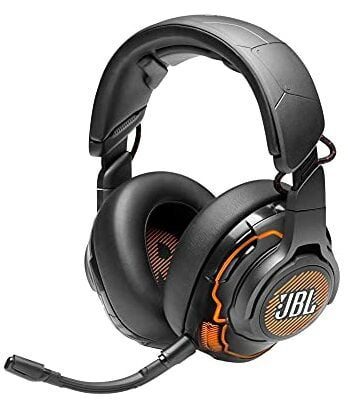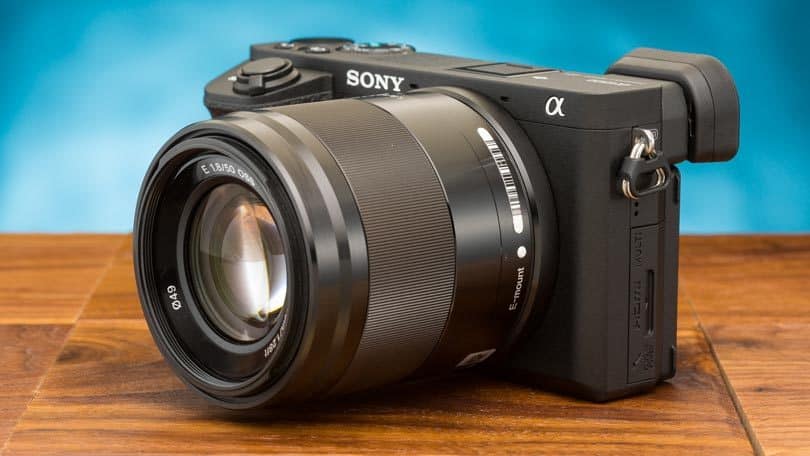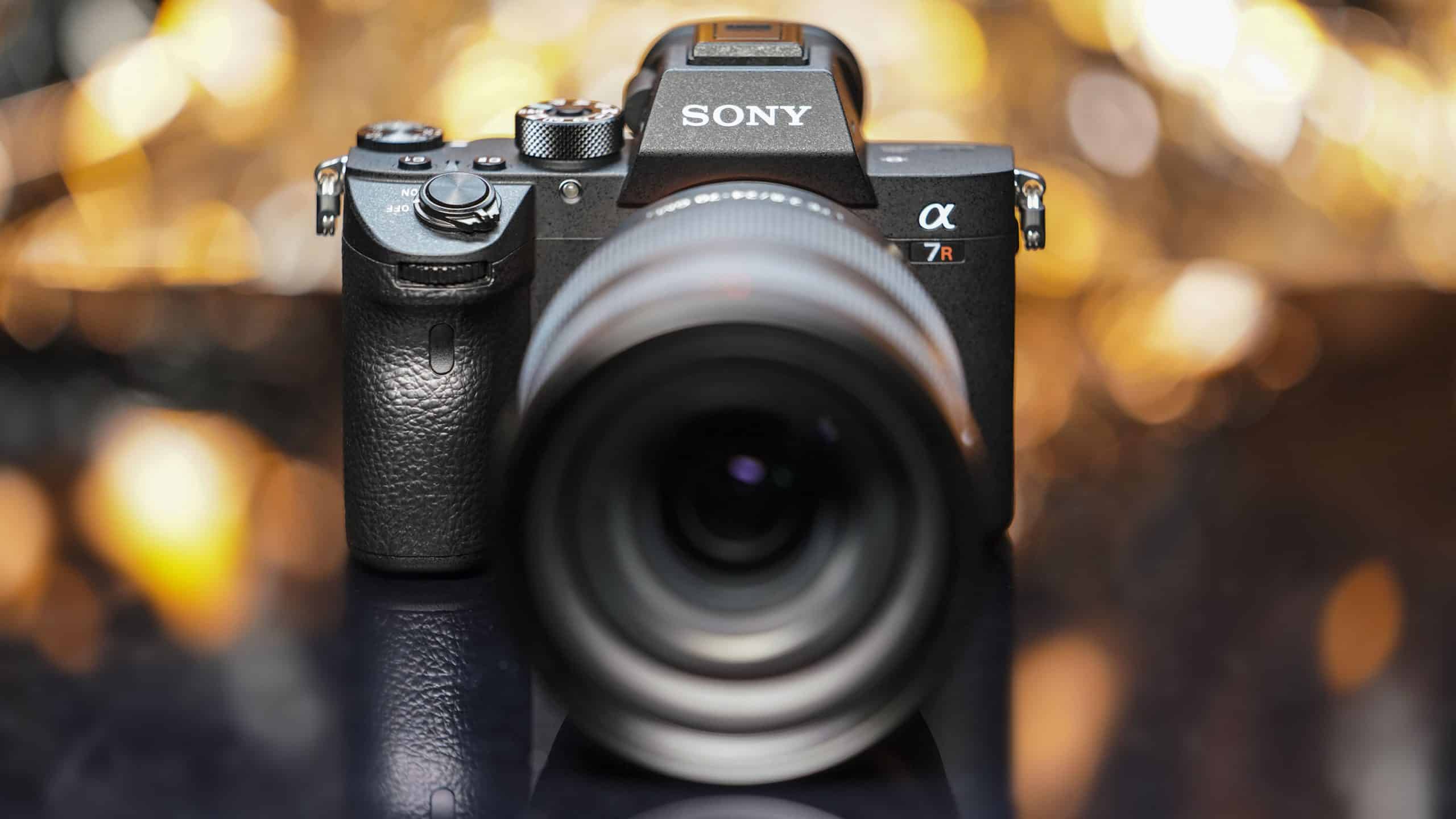To determine the best mirrorless camera on the market today, we started by eliminating models with less than 16MP. Anything less and a printed photo of more than about 36-inches wide will look pixelated. Next, we only considered mirrorless cameras with excellent image quality – choosing the finest digital cameras that depicted minimal noise even at ISO 2000 and above, which lends itself to low light performance without using the F-stop on a digital camera. We then went a step further, and sought cameras with snappy startup performance and a minimal shutter lag of 200 milliseconds or less. While not a prerequisite, extra credit was given to any mirrorless cameras that included 4K video at 24 and 30 fps, an articulating rear screen, an electronic viewfinder, and in-body image stabilization.
Thanks to its outstanding image quality and versatility as shown in our extensive real-world testing, the Sony A7 III Camera is our top choice for the best mirrorless camera. It offers a full-frame sensor with outstanding low light performance, a wide range of available Sony FE mount lenses and it even has good battery life.
Top 7 Best Mirrorless Cameras Compared
#1 Sony A7 III Camera
Award: Top Pick/Best Low Light
WHY WE LIKE IT: The Sony A7 III is ranked among the top full-frame cameras for image quality, with 14 stops of dynamic range and very little noise even at ISO values of 4000 and up, outperforming even some highly-rated medium format digital cameras with five figure price tags.
Read Full Review: Sony A7 III Review
- Great for night shooting, able to make usable images even from ISO 4000
- Great video quality with 4K ultra HD at 24 & 30 fps
- Fastest, most accurate autofocus of any mirrorless camera we’ve tested
- Confusing menus
- Lack of a dedicated physical ISO button
- Doesn’t come with an external battery charger (only a USB charger is included).
For photographers, the award-winning Sony A7 III offers one of the best autofocus systems on any mirrorless camera, with an almost ridiculous 693 phase-detection points and 425 contrast detection points. It also shoots up to 10 fps, on a par with much heavier and more expensive prosumer DSLRs. The Sony A7 III stands out even more for videographers, since it’s capable of recording 4K video using the whole full-frame sensor rather than a crop as with most DSLRs.
Plus, the A7 III’s video autofocus is also among the best we’ve seen. Add in useful filmmaking features like Sony’s editor-friendly log footage options, and the A7 III becomes a compelling mirrorless camera for amateurs and enthusiasts as well as a budget-saving choice for pros.
#2 Panasonic Lumix G7 Camera
Award: Honorable Mention/4K Video
WHY WE LIKE IT: The Panasonic G7 shoots crisp, good quality 4K video with minimal “rolling shutter.” It is easy to use if you’re used to shooting on a DSLR, includes an external mic jack for audio, and thanks to its MFT lens mount it can adapt to a wide variety of lenses.
Read Full Review: Panasonic Lumix G7 Review
- Intuitive, easy to use controls
- Great 4k video quality at 24 and 30 fps
- Works with a large variety of lenses, new and vintage
- Smaller sensor than some comparably priced mirrorless cameras
- Somewhat limited usable ISO range for low light
- Only 16MP max resolution for stills
The Panasonic Lumix G7 is our top pick among Micro Four Thirds sensor digital mirrorless cameras. It mixes high-level functionality with ease of use and affordability. This series of cameras has long been a favorite for aspiring and student filmmakers, and for good reason.
As a bonus, the G7 can be adapted to work with old “C–mount” broadcast and television lenses, some of which can give you amazing quality for very little money. With the smaller sensor, you also get more zoom range out of physically smaller lenses. It features a built-in stereo mic for audio recording as well as a mic jack for external audio input. However, for low light situations, the G7 gets a little noisy at ISO values above 2500, so it requires a fast aperture lens, f1.4 or greater, if you want to shoot in twilight or less-brightly lit indoor settings.
#3 Nikon Z6 Camera
Award: Best Rugged/Access to Nikon Lenses
WHY WE LIKE IT: The Z6 fits Nikon’s award-winning 24.5 Mpix full-frame sensor in a lightweight yet rugged mirrorless camera, letting Nikon shooters continue using their legacy Nikon lenses while moving to the convenience of the smaller, lighter mirrorless camera body.
Read Full Review: Nikon Z6 Review
- Fast frame rate for burst shooting
- Good low light performance
- Great selection of Nikon lenses available
- Controls may be counterintuitive if you’re coming from a DSLR
- Z mount requires an adapter for most lenses
- Autofocus not as speedy as Nikon DSLRs, though comparable to others on this list
Our top pick for the best mirrorless camera for Nikon users is the Z6, a full frame 35mm equivalent mirrorless camera designed around the relatively new Z mount lens architecture. The Nikon Z6 is really fast, shooting up to 12 fps, autofocuses well, and offers image quality similar to Nikon’s FX-format DSLRs, thanks to using basically the same world-class 24.5 Mpix backsides illuminated sensor.
The Z6 is made of magnesium alloy and features weather sealing which Nikon claims is comparable to that found in the very rugged D750 and D700 semi-pro DSLRs. When it comes to video, the Z6 is capable, with 4k at 24p, HD at 60p for slow motion, and even a 6k time-lapse mode, but it’s not as easy to use as some of the more established mirrorless camera systems for videography. That said, compare the Nikon D5300 DX-format digital 24.2MP SLR camera vs Canon to really see what it can do.
#4 Olympus OM-D E-M10 Mark II Camera
Award: Most Portable
WHY WE LIKE IT: Despite being fully pocket-able, especially with the very compact 14-42mm kit lens or an even slimmer “pancake” prime lens, the E-M10 delivers crisp, high-quality images and excellent color reproduction.
Read Full Review: Olympus OM-D E-M10 Mark II Review
- Smaller footprint than an iPhone (4.5 x 3.6 inches)
- Good dynamic range & color depth
- Wide variety of high quality lenses available
- No 4K video– though the updated (and pricier) E-M10 Mark III does include this feature
- Battery life somewhat limited (320 shots per charge)
- Not the best for very dark scenes
One of the first mirrorless cameras to gain a wide following among enthusiasts and semi-pro photographers, the Olympus OM-D E-M10 is a micro four-thirds camera that stands out for its cool, vintage aesthetic and its amazingly compact size.
It shoots up to 8.5 fps and includes in-body 5-axis image stabilization. Still a favorite for serious photographers wanting something easy to travel with, the OM-D E-M10 Mark II is beginning to show its age when it comes to video functionality, lacking the ability to record UHD 4k MP4s.
#5 Canon EOS M100 Camera
Award: Best Value/DSLR-Like Images
WHY WE LIKE IT: It combines DSLR-like image quality with pocket-friendly size for powerful photography anywhere you go. To that end, at 4.3 x 2.6 inches, it’s smaller than most phones.
Read Full Review: Canon EOS M100 Review
- APS-C sensor image quality in a tiny camera
- Easy to use sharing features
- 180-degree tilting screen
- Limited supply of native EOS-M lenses
- Video can be clunky
- No built-in hotshoe to mount a flash or other accessories
The Canon M100 is a super compact mirrorless camera that uses a Canon APS-C sensor and EOS-M lens mount. It also offers handy Wi-Fi connectivity and lets you share images straight from the camera using Canon’s well-designed and easy-to-use app. While the M100 lacks a hot shoe, it does include a pop-up flash that can be set to go off with a wireless external flash if needed. It’s a great camera, just not a leading Canon DSLR camera.
#6 YI M1 Camera
We’re sorry, this product is temporarily out of stock
Award: Best Budget
WHY WE LIKE IT: At a price point lower than most mobile phones and “point and shoot” digital cameras, the YI M1 offers real usability, a quality sensor, and interchangeable lens capability.
Read Full Review: YI M1 Camera Review
- 20 MP Sony sensor
- 4k video
- Highly versatile MFT lens mount
- Fewer manual controls than some rivals
- No dedicated viewfinder
- No built-in flash
The YI M1 is our pick for the best budget mirrorless camera. It includes an excellent Sony-made 20-megapixel micro four-thirds sensor and the much-loved MFT lens mount system, letting you use a wide variety of new and vintage glass from Olympus, Panasonic, Sony, and more. It even shoots 4K video at 30fps.
#7 Fujifilm X-T100 Camera
Award: Film Like Images
WHY WE LIKE IT: The vintage-styled Fujifilm XT-100 is one of the best mirrorless cameras for those looking for a “film-like” aesthetic.
Read Full Review: Fujifilm X-T100 Camera Review
- High resolution sensor with unique color rendering
- 4K video available
- Built-in flash and electronic viewfinder
- Somewhat harder to find lenses
- Can be slower to shoot and buffer multiple images
- Some shutter lag
Fujifilm has always been a unique choice geared toward artistic and enthusiast photographers. The company is famous for its 35mm film, and still makes film cameras, after all. The XT-100 uses a 24.2-megapixel APS-C sensor and offers a variety of “film simulation” modes designed to process color like classic Fuji film stock. This sensor skips the traditional, grid-like Bayer array of red, green, and blue photo sites in favor of a more randomized pattern, claimed to more accurately capture colors with less is more.
How We Decided
We understand that mirrorless cameras span an enormous range, from casual and travel use, to backup or even go-to camera bodies for professional photographers and filmmakers. They often make the best digital cameras for beginnings. And because of that, we wanted to include a few top-rated mirrorless cameras in the semi-pro, enthusiast, and budget categories, and we conducted extensive research on our top picks as well as some real-world, hands-on testing in the field.
We looked at image quality in terms of dynamic range, ISO range, and color depth, limiting our choices to mirrorless cameras with at least 16 Megapixels for still images. We included models with at least 1080p HD video capability and with at least a 50mm-equivalent, 105mm-equivalent, and 28mm equivalent lens available.
For the semi-pro cameras we wanted to find models with at least 12 stops of dynamic range, capable of shooting 10 frames per second or more, and recording 4k footage using the whole 35-mm equivalent sensor. This gives our top picks of mirrorless full-frame cameras, the Sony A7 III and Nikon Z6, performance comparable to the range of semi-pro DSLRs like the Nikon D810 and Canon 5D Mk IV. We also looked at durability– the Z6 and A7 III are both made mostly of metal and have weather sealing–and value for the money.
For APS-C and micro four-thirds mirrorless cameras, we wanted to highlight models that had a standout feature as well as excellent value. We looked for wifi connectivity or Bluetooth capability, a 3” or larger screen, and compact overall dimensions. We selected models with minimal lag, less than 5 second start-up times, at least a dozen autofocus points, and at least 16 Megapixels of still resolution. We also noted the video format, as many of these mirrorless cameras can shoot 4k. We took into account lens availability as well. Finally, as battery life is sometimes a weakness of mirrorless cameras, we looked for cameras with batteries rated for at least 300 shots per charge.
Best Mirrorless Camera Buyer’s Guide
One of the Most Important Features of a Mirrorless Camera
- Sensor Size
When buying a digital camera first thing to note, whether you’re looking at compact, mirrorless cameras or DSLR models, is the sensor size. That determines roughly what the camera’s image quality is going to be like (bigger is usually better in this case) as well as its field of view and depth of field. Bigger sensors mean a shallower depth of field for a given aperture number, letting you achieve artistic “bokeh” effects with blurred backgrounds. On the other hand, if you want to get more zoom range out of smaller glass, you may want a smaller sensor. This is because smaller sensors have a “crop” factor–they give you a smaller field of view but it’s more zoomed-in. For portable interchangeable lens cameras, the largest sensors commonly used are the confusingly-named “medium format” size, followed by “full frame” or 35mm equivalent– this is what most professional digital cameras, DSLR and mirrorless alike, employ. An APS-C or “crop” sensor is a little more than half the area of a full-frame, and a “micro four-thirds” sensor is in turn a little smaller than an APS-C. The four-thirds sensor is similar in size to traditional 16mm film, meaning digital mirrorless cameras with MFT sensors can often be adapted to use lenses from 16mm cinema cameras. - Other Features
Most mirrorless cameras over digital SLR cameras offer advanced features like image stabilization, multi-point autofocus, and at least some kind of wireless sharing. If you’re traveling with the camera and want to be able to upload on the go, this is a big help. We’ve looked into the wifi and Bluetooth features on the Sony A7 III and rival cameras to see which ones are easiest to use. Another consideration with mirrorless cameras is lens availability. While Nikon, Sony, Olympus, and Fujifilm systems all have great lenses, you may have a preference, or already own some “glass” from one or another.
![Best Mirrorless Camera in [year] ([month] Reviews) 1 Sony a7 III ILCE7M3/B Full-Frame Mirrorless...](https://m.media-amazon.com/images/I/416ZlJrb3vL._SL160_.jpg)
![Best Mirrorless Camera in [year] ([month] Reviews) 2 Panasonic Lumix G7 4K Digital Mirrorless Camera Bundle...](https://m.media-amazon.com/images/I/41hOAuc0i2L._SL160_.jpg)
![Best Mirrorless Camera in [year] ([month] Reviews) 3 Nikon Z6 Full Frame Mirrorless Camera Body](https://m.media-amazon.com/images/I/51ScSEwwSYL._SL160_.jpg)
![Best Mirrorless Camera in [year] ([month] Reviews) 7 Our #4 Pick is the Olympus OM-D E-M10 Mark II](https://m.media-amazon.com/images/I/41XrXb8UyWL._SL160_.jpg)
![Best Mirrorless Camera in [year] ([month] Reviews) 9 Our #5 Pick is the Canon EOS M100](https://m.media-amazon.com/images/I/51KMPIRtX-L._SL160_.jpg)
![Best Mirrorless Camera in [year] ([month] Reviews) 10 Our #7 Pick is the Fujifilm X-T100](https://m.media-amazon.com/images/I/51IdJFzLx0L._SL160_.jpg)




















![Best Digital Cameras in [year] ([month] Reviews) 31 Best Digital Cameras in 2025 (December Reviews)](https://www.gadgetreview.dev/wp-content/uploads/what-is-resolution-on-digital-camera-1.jpg)
![Best Digital Camera Docking Stations in [year] 32 Best Digital Camera Docking Stations in 2025](https://www.gadgetreview.dev/wp-content/uploads/best-digital-camera-docking-stations-image.jpg)
![Best Mirrorless Camera in [year] ([month] Reviews) 33 Best Mirrorless Camera in 2025 (December Reviews)](https://www.gadgetreview.dev/wp-content/uploads/best-mirrorless-camera-image.jpg)
![Best Digital Camera Tripods in [year] 34 Best Digital Camera Tripods in 2025](https://www.gadgetreview.dev/wp-content/uploads/best-digital-camera-tripods-image.jpg)
![Best Canon Digital Cameras in [year] 35 Best Canon Digital Cameras in 2025](https://www.gadgetreview.dev/wp-content/uploads/best-canon-digital-cameras-image.jpg)
![Best Polaroid Digital Cameras in [year] 36 Best Polaroid Digital Cameras in 2025](https://www.gadgetreview.dev/wp-content/uploads/best-polaroid-digital-cameras-image.jpg)
![Best Small Digital Camera Cases in [year] 37 Best Small Digital Camera Cases in 2025](https://www.gadgetreview.dev/wp-content/uploads/best-small-digital-camera-case-image.jpg)
![Best Digital Camera USB Cables in [year] 38 Best Digital Camera USB Cables in 2025](https://www.gadgetreview.dev/wp-content/uploads/best-digital-camera-usb-cable-image.jpg)
![Best Digital Camera Bags in [year] 39 Best Digital Camera Bags in 2025](https://www.gadgetreview.dev/wp-content/uploads/best-digital-camera-bag-image.jpg)
![Best Sony Digital Cameras in [year] 40 Best Sony Digital Cameras in 2025](https://www.gadgetreview.dev/wp-content/uploads/best-sony-digital-cameras-image.jpg)
![Best Panasonic Digital Cameras in [year] 41 Best Panasonic Digital Cameras in 2025](https://www.gadgetreview.dev/wp-content/uploads/best-panasonic-digital-cameras-image.jpg)
![Best Digital Camera Accessories in [year] 42 Best Digital Camera Accessories in 2025](https://www.gadgetreview.dev/wp-content/uploads/best-digital-camera-accessories-image.jpg)
![Best Kodak Digital Cameras in [year] 43 Best Kodak Digital Cameras in 2025](https://www.gadgetreview.dev/wp-content/uploads/best-kodak-digital-cameras-images.jpg)
![Best Compact Cameras in [year] 44 Best Compact Cameras in 2025](https://www.gadgetreview.dev/wp-content/uploads/best-compact-camera-image.jpg)
![Best Digital Cameras with Wifi in [year] 45 Best Digital Cameras with Wifi in 2025](https://www.gadgetreview.dev/wp-content/uploads/best-digital-camera-with-wifi-image.jpg)
![Best Digital Cameras for Travel in [year] 46 Best Digital Cameras for Travel in 2025](https://www.gadgetreview.dev/wp-content/uploads/best-digital-camera-for-travel.jpg)
![Best Digital Cameras for Video in [year] 47 Best Digital Cameras for Video in 2025](https://www.gadgetreview.dev/wp-content/uploads/best-digital-camera-for-video.jpg)
![Best Nikon Digital Cameras in [year] 48 Best Nikon Digital Cameras in 2025](https://www.gadgetreview.dev/wp-content/uploads/best-nikon-digital-camera.jpg)
![Best Point and Shoot Cameras for Birding in [year] 49 Best Point and Shoot Cameras for Birding in 2025](https://www.gadgetreview.dev/wp-content/uploads/best-point-and-shoot-camera-for-birding.jpg)
![10 Best Medium Format Digital Cameras in [year] 50 10 Best Medium Format Digital Cameras in 2025](https://www.gadgetreview.dev/wp-content/uploads/best-medium-format-digital-camera-scaled-1.jpg)















